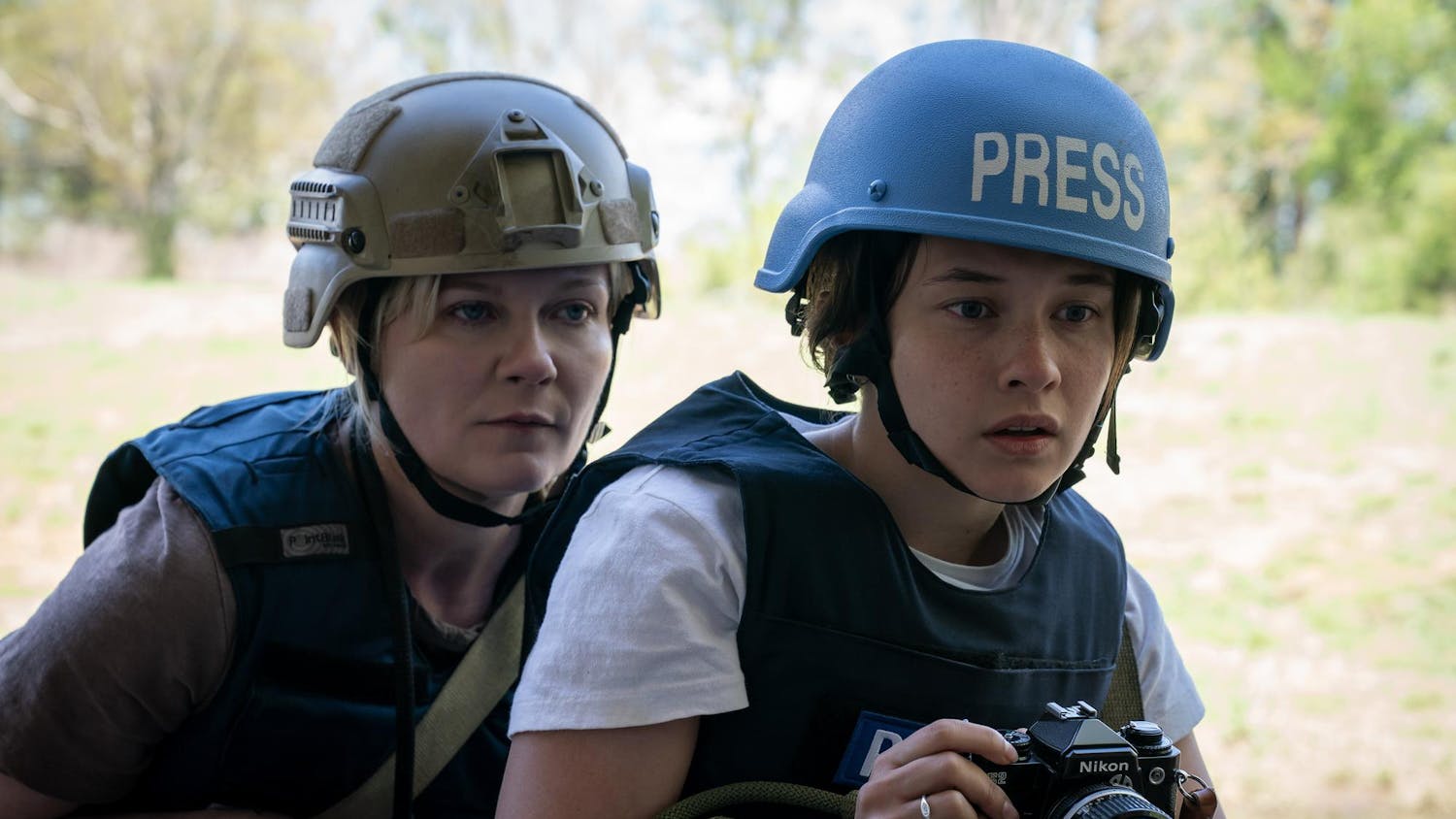Strangers exchanged “v-cards” while couples stared at the fixtures on the walls and tried to identify which crevice of the body had been photographed and enlarged beyond recognition.
Anne Kinsey Call, Alfred Kinsey’s 89-year-old daughter, sat in the middle of the gallery, talking with the artists.
“Sex was always complicated by principles and morals, but for most it is an individual relationship,” Kinsey Call said. “Sex is a lot healthier today, and you can see it in the art.”
Alfred Kinsey’s research about sex and gender at Indiana University pushed the envelope more than 60 years ago, and his reputation for exposing the taboo lives on today through forums such as the Kinsey Juried Art Show.
Large crowds visited the Grunwald Gallery of Art to view more than 90 artworks that aim to expose issues with gender, identity, sexuality and reproduction at the opening reception of the eighth annual Kinsey Institute Juried Art Show Friday evening.
Three jurors had selected 94 artworks to be displayed in the Kinsey art show out of 924 submissions by artists from six countries.
“The quality of the work has gone up every year,” Grunwald Gallery director Jeremy Sweets said. “More and more entries are coming internationally, which shows that the art show is getting recognition and is becoming more prestigious.”
The Kinsey art show attracted a diverse audience of IU students, graduates, professors, Bloomington locals and people who had traveled specifically for the event, as well as at least 20 of the featured artists in the show, said Catherine Johnson-
Roehr, Curator of Art, Artifacts and Photographs at The Kinsey Institute.
“It’s crowded, it’s great,” Sweets said. “People are engaged and networking. There are a lot of people here from the community and outside the area because the show has that kind of a pull. This show is very unique.”
The Kinsey Art Show helps artists display artwork that may not always be welcomed in galleries due to sexual content.
The curators added a movable wall at the front of the gallery space to create a “peep show effect,” Sweets said.
The exhibit included photography, video, paintings, sculptures, interactive gadgets and computer programs, drawings, fiber art and jewelry. As viewers took in the various artworks, their facial expressions showed reactions of confusion, entertainment, curiosity and disgust.
“It’s definitely something to look at for a while,” Sue Riegsecker, a first-time Kinsey art show visitor, said. “But something I really like about the show is that there are so many different experiences coming together in this one place.”
Call believed the juried art show represented Kinsey well.
“The show is infinitely superior to last year,” she said. “The quality gets better every year.”
The recognized artworks were “Together: Animator, Animated” by Robin Carlson of Evanston, Ill., a stop-action video installation that received the Best in Show award.
“The Position,” a photograph by Erin Randle of Chicago, Ill., received the Gallery Visitors’ Choice award. The sculpture “Labor Intensive,” created by Michael Brohman of Denver won the Curators’ Choice Award.
No two pieces were alike. Carlson’s stop-action animation video dealt with the relationship between real and artificial bodies, while Brohman’s cast bronze sculpture illustrated surrogate pregnancy.
“I thought the sculpture was the most provoking and shocking piece of all,” attendee Afua Kwaaning, said. “How the baby’s face was wrapped up within the two outstretched arms, maybe reaching for help, was really outside of the box.”
Artists identified by nametags mingled with the visitors in the gallery for a personal and unique art-viewing experience. Returning Kinsey art show artists and new artists alike were given the chance to display and engage in dialogue about their work.
Therese Shechter of Brooklyn, N.Y., passed out “v-cards” to visitors when discussing her digital interactive web project and documentary “The V-Card Diaries.” Her interactive project of different peoples’ stories and ideas about sex delves into “the myth and meaning of virginity in America,” Shechter said.
“There isn’t this big before and after moment of losing virginity that society sells to us in teen movies and pornography and so on,” Shechter said. “It is a long process of self-discovery.”
Kinsey Art Show features thought-provoking art
Get stories like this in your inbox
Subscribe



